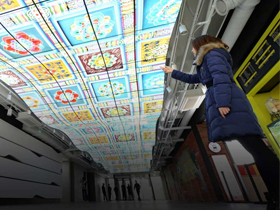
Blog


What is digital signage?

Digital signage consists of a display of images or videos onto a screen (which can be tactile for increased interaction), or onto a projector. In fact, it is the transition from traditional paper signage to on-screen display.
Some benefits of digital signage
- Saves time and money
- Saves on paper and ink
- Flexible and fast
- Modern and new
- New options
- Reduces the perceived time spent in waiting rooms, elevators, etc.
- Draws more attention than traditional paper signage
- Higher impact on sales than traditional paper signage
- Considered as one of the most interesting, entertaining and trusted forms of media
How does digital signage work?
Digital signage consists of three key elements:
1. The software platform which allows one to manage and broadcast images, videos, posters, information, promotions and more, from the cloud.
2. The monitor (screen) which broadcasts the images.
3. The media player which links the software platform to
your digital screen.
Technology that helps target your audience
Since this technology is digital rather than printed, it is easy to create broadcasting schedules to target specific audience needs based on the location and time of day. A good example is the McDonald’s menu, which automatically transitions from the breakfast to the lunch/supper menu at a certain time of the day.
Within an internal context, digital signage replaces classic posters to inform the public on company news, health and safety instructions, or even emergency situation instructions. It is also possible to divide the screen into different zones, so that each department can advertise their information without modifying that of another department. If the cafeteria screen posts their daily menu in the left zone, the Human Resources Department can post their new employment positions in the right-hand zone.
Both departments are free to modify their posts without impinging upon, or altering those of the other. It also allows for adapting the information based on the shifts, in order to constantly transmit pertinent information to target audiences. For instance, for the night shift, consider wearing noticeable equipment with reflective strips.
“Since this technology is digital rather than printed, it is easy to create broadcasting schedules to target specific audience needs based on the location and time of day.”
Essentially, there is no more need to physically change posters. Simply modify the content in the management platform from the cloud, and the media player will update automatically. And voilà, new information is available to the public just seconds later.





